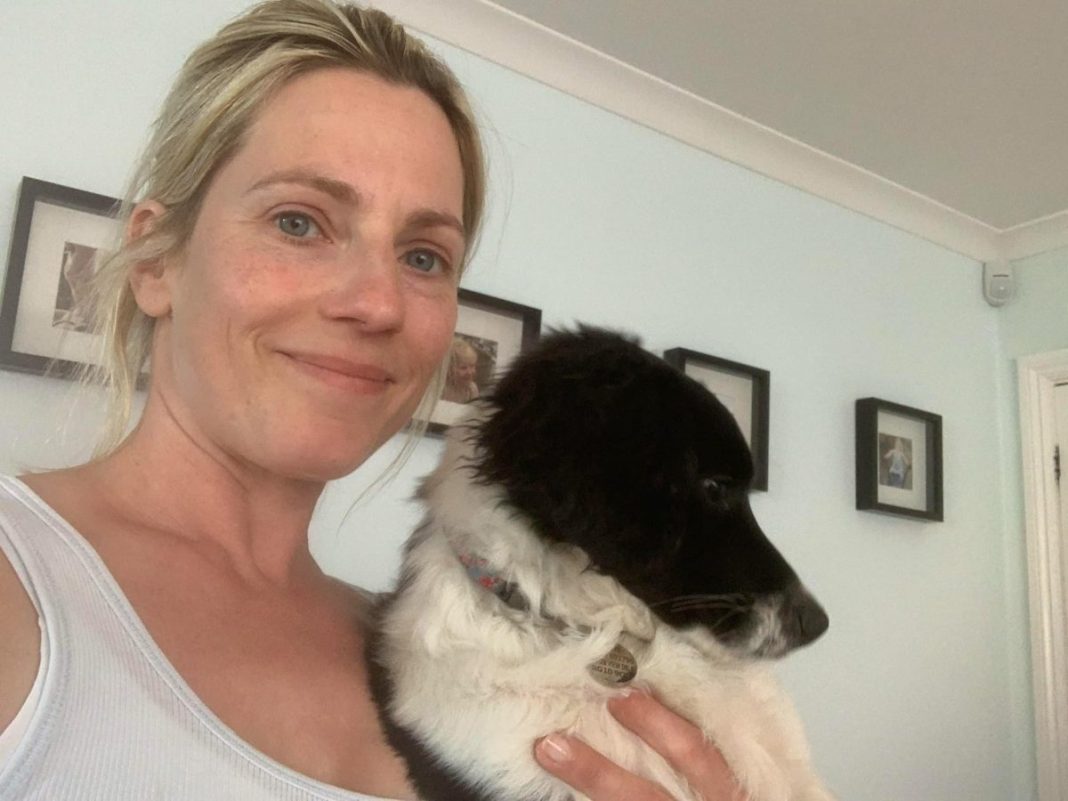We often discussed getting a family dog once our daughter was grown up enough, and we were always aware that moment would arrive.
a rescue dog
According to Angela Walker, 46, a podcast host and producer from Berkshire, who has previous experience with adopting animals as she already had a rescue cat in her family.
Walker mentions that she has always preferred adoption over purchasing since she is “conscious of the potential health issues resulting from breeding dogs” and wants to avoid supporting “puppy mills,” places known for their subpar and often neglectful treatment of animals. She also emphasizes, “It’s possible to acquire a puppy via social media, but this process ought to be better regulated.”
They believed a Labrador-like dog—energetic, sociable, and calm—would be ideal for their growing family. After searching through various shelters for several months, they found what seemed like a suitable option while browsing an online directory of a nearby center.
“I came across an advertisement for a mixed-breed dog that had some Labrador in him, so I decided to go and meet him,” she explains.
Pepe, the dog, was taken outside to greet her. Walker mentions that she spent around five minutes talking with the staff regarding some fundamental details and preferences. “I shared with the lady who we are as a family, mentioned that we have a lovely garden and a young daughter, emphasizing that the dog needed to get along well with both my daughter and her playmates.”
She learned that the dog had spent three years living with “a family of three children and several cats,” but they were forced to relinquish him because they moved to a smaller place where pets weren’t allowed. She believed this made him fit her needs—he was accustomed to household routines and his previous owners gave him up due to circumstances rather than behavioral issues.
Pepe was then placed on a leash, and the worker recommended that Walker take him for a walk around the premises to see how things went. “He was incredibly gentle, and I felt quite sad for him. I truly hoped he wouldn’t have to remain at the shelter any longer than needed,” she mentioned.
She mentions that even though she expressed an interest in taking him home, she found it surprising that nobody wanted to conduct a deeper examination of either herself or her house, nor did they perform a thorough background check. “I could have been anyone at all; she never verified my details or requested any sort of information to ensure I was a proper fit. It struck me as somewhat strange, yet I genuinely desired to take care of the dog because he appeared so lovely.”
Numerous renowned animal shelters, such as those run by Battersea or the RSPCA, maintain exceptionally stringent criteria for adoption and necessitate extensive details along with numerous safety inquiries from prospective pet parents. This involves completing an application form, undergoing interviews, and having your living space inspected. Often, this thorough vetting process takes considerable time to ensure the best possible placement.
Read Next:
Six dining routines to embrace in middle age for healthy aging—say experts
Other centers may not adhere to the same procedure — some function through social media platforms such as Instagram and Facebook, and establish connections with prospective owners there.
Despite her concerns over the absence of inquiries, Walker had previously contacted a dog trainer, which made her feel assured that she was taking appropriate steps for bringing the dog into their lives. “Our aim was to ensure everything was done correctly and that we would take good care of the dog.” With this in mind, she resolved to go through with it.
Once she took Pepe home, she mentions that he quickly turned unapproachable and frightened, not appearing as though he came from a nurturing environment. “He would be on the couch showing his teeth at me, which made me feel very afraid.” Additionally, she recounts witnessing him lunging towards their cat.
Feeling anxious, Walker meticulously reviewed the folder of information supplied by the center. She discovered several phone numbers and began dialing them. “I talked to a woman who had firsthand knowledge,”
rescued the dog
A year ago,” it was revealed that he came from a kill center in Romania (there was still a tear in his ear where his tag from the Romanian shelter had been). Walker was unaware that the dog had been transported from another country.
The lady who spoke on the phone mentioned that she had taken him to the UK, and according to her information, he was handed over to a family. However, they were forced to relinquish custody because he bit their child. It’s uncertain if they informed the adoption agency of this incident—possibly fearing rejection. Additionally, the shelter stated that they weren’t aware Pepe came from Romania.
‘I felt as though I truly let down that dog’
“I was incredulous,” Walker stated. “I could never have believed it.”
adopted that dog
If I had known about his history of biting children, I would have been utterly heartbroken and thought, ‘I cannot take the chance of having this dog remain in my home anymore.’ ”
Despite this occurring several years back, Walker remains bothered by what transpired.
I truly feel as though I let that dog down,” she remarks. “It’s hard to say what experiences he had endured. Maybe someday he would make a wonderful companion, but definitely not then, and it wouldn’t have been fair to place him with a family yet.
“If we hadn’t had kids, I would’ve kept him and dedicated my time, money, and energy to supporting his development instead. However, placing a dog with a biting history into a household with a child is entirely irresponsible,” she explains.
Walker indicates that providing families with complete information allows them to make well-informed choices. “With countless canines awaiting adoption in shelters,
need rehoming
, and they deserve a second chance, but the people that take on those dogs need to know what they’re taking on.”
She called the shelter and told them what she’d found out about Pepe’s history. She says the shelter said they took the family’s story at face value when they handed him over, and denied any wrongdoing. Walker did get her £200 adoption fee back out of principle.
“I think the shelter hadn’t done due diligence,” she says. “They said they were passing him on in good faith from what they’d been told. I think it’s a case of naivety on their part… and the fact the industry is poorly regulated meant the shelter didn’t have a legal responsibility to do that. It wasn’t malicious.”
They sent him back to her the next day after she uncovered the truth—returning him not to the shelter, but to the person who had initially brought him to the UK. She mentioned that she could find a better home for him suited to his needs.
Although this was a distressing circumstance for both the dog and Walker’s family, fortunately, it did not deter them from seeking out another one.
rescue dog
The next time around, they decided to look for a puppy to prevent any uncertainties about the dog’s background. They chose Pixie, a mix between a collie and a spaniel, from another animal shelter.
According to Walker, this time around, every aspect of the process was significantly improved and felt more professional. “They visited my home, conducted interviews with both myself and my spouse, inspected our garden, and recommended installing a linked fence to reinforce the hedge and ensure it would be puppy-proof. It was clear they were thoroughly verifying that we met their criteria, which provided great reassurance,” she notes.
Several weeks afterward, they managed to bring Pixie home and astonish their daughter with this unexpected reunion, thus restoring their family unit. “Pixie has become such a wonderful addition to our family, and I’m thrilled that we didn’t let that past experience deter us.”
Suggestions for Considerations When Adopting a Dog:
- Choose a reliable rescue center that screens prospective families for adoption and conducts essential background checks.
- Make sure every family member meets the dog initially to guarantee it’s a suitable match for everyone involved—not just for an individual.
- Spend money on hiring a skilled dog trainer to prevent negative behaviors – and also assist yourself in adapting to being a dog owner.






